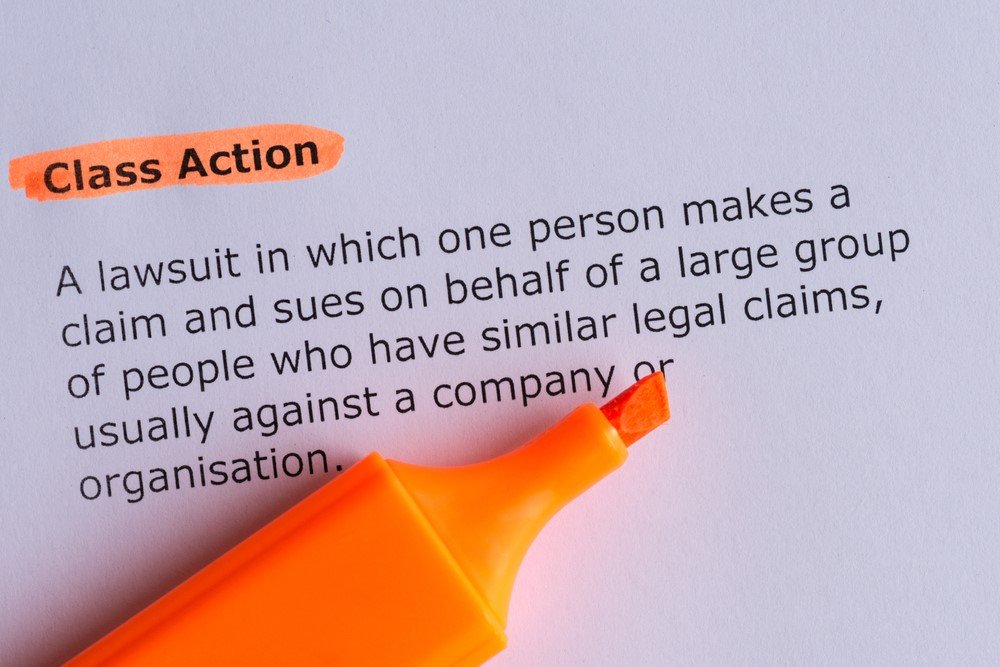Class Action Lawsuits 101: What You Required to Find Out About Legal Actions
Class Action Lawsuits 101: What You Required to Find Out About Legal Actions
Blog Article
Secret Factors to Consider in Course Action Legal Actions: Insights for Lawyers
Class activity legal actions can be challenging and complicated for attorneys to browse. From course accreditation needs to problems estimations and settlement arrangements, there are several essential factors that need to be carefully thought about. Recognizing these variables and their effects is critical for lawyers aiming to successfully represent their clients in class activity lawsuits. By delving into the intricacies of course action litigation, this discussion intends to supply useful understandings for lawyers looking for to browse this elaborate legal landscape.
Class Accreditation Demands
To proceed with a course activity suit, lawyers have to browse via a series of rigorous course certification needs. Course accreditation is a critical stage in the lawsuits procedure that identifies whether a group of complainants can be licensed as a course and wage their insurance claims jointly. These demands serve to ensure that class actions are efficient and suitable systems for dealing with disputes entailing various complainants.
One of the key needs for course accreditation is numerosity. This requirement demands that the course be so many that joinder of all participants is unwise. While there is no fixed numerical limit, courts normally consider a class with more than 40 members as completely numerous. Furthermore, commonness is one more necessary aspect in class certification. It calls for that there are concerns of regulation or reality typical to the course, which should predominate over private concerns.
In addition, typicality and competence of representation are essential factors to consider. Typicality guarantees that the cases or defenses of the depictive parties are normal of the course. Competence of depiction makes sure that the reps will fairly and adequately shield the interests of the course participants. A course activity should also please the need of prevalence, suggesting that a course action is a superior approach for adjudicating the dispute contrasted to other offered techniques.
Navigating via these class certification needs can be complex and challenging for lawyers. However, understanding and meeting these requirements are vital to efficiently seek a class action legal action on behalf of a team of complainants.

Commonness of Insurance Claims
The following vital factor to take into consideration in the course accreditation procedure is the commonality of insurance claims amongst the complainants. Commonness describes whether the course members share comparable legal concerns and questions of truth that can be settled jointly. Simply put, it is necessary to identify if there are typical concerns of legislation or fact that are main to the lawsuits which predominate over any kind of individual problems.
To develop commonness, the plaintiffs must demonstrate that there are valid or lawful issues that are common to the whole class. This can be attained by identifying an usual training course of conduct or an usual legal concept that underlies the claims (Class action lawsuit). The presence of common questions is very important because it advertises judicial effectiveness and economic climate by permitting a solitary decision to settle the issues for the entire course
Nevertheless, it is very important to note that the commonness need does not require that all the individual cases equal. If there are still usual concerns that bind the course together., distinctions in damages or specific scenarios do not always defeat commonness.

Problems Calculations
When determining problems in class activity legal actions is the accurate assessment of monetary losses incurred by the class members,One important facet to think about. In order to determine the proper amount of settlement, it is needed to examine the degree of injury experienced by each person within the course. This can be a complex job, as it calls for a thorough analysis of various factors, such as the nature and duration of the damage, the monetary effect on the influenced individuals, and any type of various other pertinent factors to consider.
When analyzing financial losses, it is very important to take into consideration both the direct and indirect damages suffered by the class members. Straight damages describe the actual out-of-pocket expenses incurred as an outcome of the defendant's actions. These may include medical costs, home damage expenses, or any various other tangible monetary losses. On the various other hand, indirect problems encompass the intangible losses that are harder to quantify, such as emotional distress, loss of reputation, or reduced lifestyle.
To compute damages accurately, attorneys need to gather comprehensive evidence, consisting of financial records, expert viewpoints, and statements from the course members. They might also require to engage economic and economic specialists that can offer understandings right into the lasting monetary implications of the harm experienced.
Settlement Arrangements
During negotiation negotiations, lawyers have to participate in careful and critical discussions to reach a mutually reasonable resolution for all parties associated with the course activity claim (Class action lawsuit). Negotiation negotiations are a vital phase in the litigation procedure, Learn More Here where the events try to get to a compromise without mosting likely to test. These settlements require lawyers to use their negotiation abilities, lawful knowledge, and understanding of the case's strengths and weaknesses
One vital factor to take into consideration during negotiation arrangements is the possible dangers and prices related to proceeding to trial. Lawyers need to thoroughly examine the probability of success at test and weigh it against the potential benefits of a settlement. They should also take into consideration the potential time and sources that would certainly be required to undergo a test, in addition to the potential negative publicity that could arise from a public trial.
Another vital element is the interests and problems of the class participants. Lawyers need to recognize what the course members hope to accomplish via the suit and exactly how a negotiation can resolve their grievances. By considering the course members' point of views and talking to them throughout the negotiation process, attorneys can better advocate for their rate of interests and make certain that any type of negotiation gotten to is reasonable and satisfying.
Furthermore, lawyers need to be prepared to bargain with the opposing party and their lawful reps. This requires a deep understanding of the strengths and weaknesses of both sides' disagreements and a desire to compromise. Proficient negotiators can take advantage of this expertise to locate commonalities and craft imaginative solutions that fulfill the demands of all celebrations entailed.
Effective Customer Representation
To efficiently represent their clients in class action legal actions, lawyers must have a comprehensive understanding of the instance and vigilantly supporter for their customers' rate of interests. Reliable customer representation calls for legal representatives to establish open lines of communication and maintain a solid attorney-client partnership throughout the whole litigation process.
Firstly, lawyers need to completely evaluate the facts, legal problems, and prospective threats related to the situation. This consists of performing a detailed examination, assessing pertinent documents, and speaking with specialists if required. By acquiring a deep understanding of the situation, legal representatives can develop a critical technique tailored to their clients' purposes and demands.
Additionally, legal representatives must actively advocate for their clients' interests during all phases of the claim. This includes preparing persuasive lawful arguments, performing extensive research, and providing compelling evidence to support their clients' claims. Attorneys need to also stay informed regarding current advancements in class action law and use this understanding to reinforce their clients' settings.
In addition to lawful advocacy, effective client representation includes giving routine updates, answering questions, and attending to any worries that clients may have. Legal representatives ought to be positive in maintaining their customers notified regarding the progress of the instance and any significant growths that might impact the result.
Eventually, effective customer representation calls for attorneys to be diligent, receptive, and devoted to shielding their clients' civil liberties and rate of interests. By embracing a client-centered approach, attorneys can make the most of the possibilities of accomplishing a desirable outcome in course action legal actions.
Conclusion
Finally, legal representatives associated with course activity claims ought to take into consideration vital aspects such as class accreditation requirements, the commonness of claims, damages calculations, settlement negotiations, and reliable customer representation. By very carefully resolving these factors, see this attorneys can boost their this content chances of success in course action legal actions and make sure that the passions of their customers are protected.
Comprehending these factors and their implications is vital for lawyers intending to successfully represent their customers in course activity legal actions.To continue with a course activity claim, legal representatives have to browse via a collection of rigid course accreditation demands. Class accreditation is a vital stage in the litigation process that identifies whether a group of complainants can be licensed as a course and proceed with their claims collectively. A course activity need to likewise satisfy the need of prevalence, suggesting that a course action is a superior approach for settling the conflict compared to various other offered techniques.
One essential aspect to take into consideration when computing damages in class activity legal actions is the precise evaluation of financial losses sustained by the course members.
Report this page